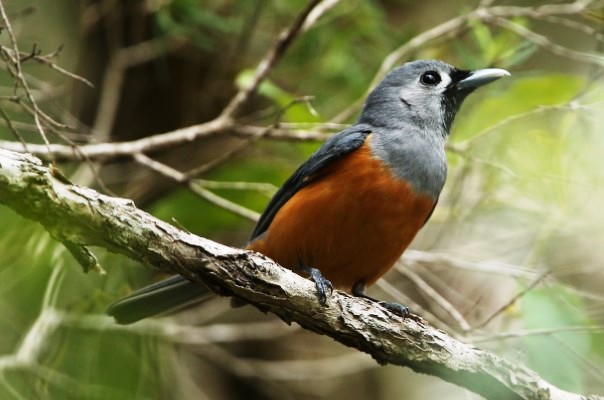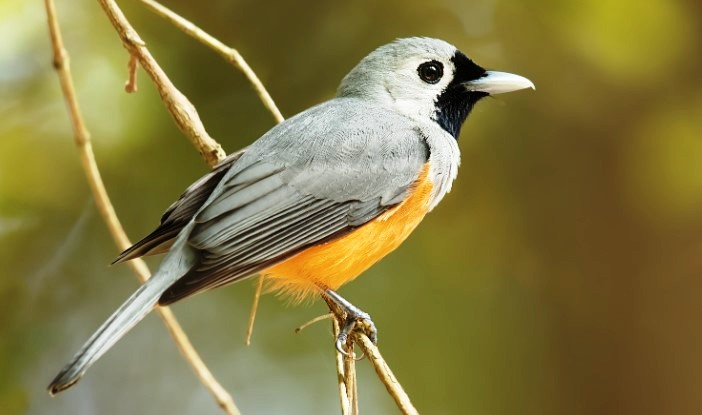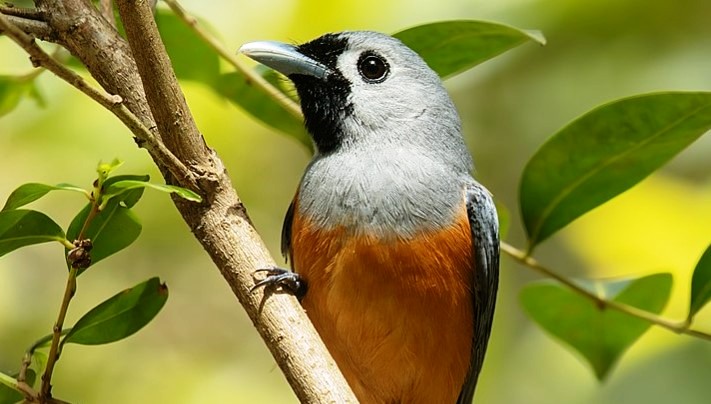Family: The songbird Black-faced Monarch belongs to the family Monarchidae, and it can be found along the eastern coast of Australia as well as in New Guinea, where most birds migrate during the Australian winter, May to August.
Habitats: In comparison to other Australian flycatchers, the Black-faced Monarch only occasionally hawks out to capture its prey. In rainforests and wet eucalypt forests, it primarily feeds on insects and spiders found on branches and leaves.
Diet: Normally, it feeds over understorey tangles, moving along branches, poking into crevices and cracks, and hopping up to higher branches after a short distance. By doing so, it ascends progressively to about eight meters, then descends quickly, reversing course once or twice along the way.

Migrants: Migration is common among black-faced monarchs, but much remains to be discovered about their movements. Birds arrive on the southern coast of New South Wales in September and breed over the summer. They leave about mid-March.
It is most abundant and breeds on the Atherton Tableland during the summer, after which its numbers decline significantly through the winter. During migration, the birds appear only briefly at Iron Range, Queensland, between September and March. They have never been found breeding in the lowlands of southern and eastern New Guinea during the winter (March–October).
On the east coast of Australia, most, if not all, of the breeding population migrates to New Guinea for the winter. Lighthouses in the Torres Strait serve as evidence that it migrates both at night and during the day.
Behavior: During breeding and at its winter quarters, the Black-faced Monarch may be solitary or in pairs but may gather in small groups while migrating.
Alternative names: The bird is also known as Black-faced Flycatcher, Carinated Flycatcher, and Pearly-winged Flycatcher.
Size: The black-faced monarch measures about 160–180 mm in length.
Identification: Female birds appear duller than males, but both sexes are similar. There is a plain mid-blue-grey color to the head and upper parts, and a lighter blue-grey color to the tail. There is a pale to dirty white color on the ear coverts. Blue-grey is the color of the wing covers. There are broad blue-grey edges on the wings with dusky quills. Black is the color of the forehead and throat. The upper breast and sides of the neck are pale blue-grey; the rest of the underparts are richly rufous. There is a thin black eye ring around the dark brown eyes. There is a pale tip on the bill and it is steel-blue in color. Leaden-gray is the color of the feet.

Immatures: With an all-grey face, they resemble adults, but they are duller.
Call: Birds make a flycatcher-like creak and a down-slurred chatter.
SONG: The loud, whistling call of the black-faced monarch introduces one or two brief notes. In the second note, the pitch is lower than in the first note, followed by long, ascending notes followed by shorter swirling drops, why-you-wich-ye-ou. Individual birds produce notes in different sequences.
Nesting and Breeding: In a sheltered gully or rainforest stand, its nest is usually hidden in shrubbery. Nesting and breeding occur between October and January. Place a deep cup or goblet of thick green moss in the fork of a small tree or shrub, 1–12 meters above the ground, on a foundation of more robust plant material like she-oak needles, usually lined with roots.
Eggs: In the fall, the Black-faced Monarch lays two to three eggs, which are smooth and matt white to pale pink, dotted with red and red-brown shades, and underlying purple-gray, either evenly spread out or in a zone at the largest end. Eggs are oval in shape and about 24 x 17 mm in size. Incubation by females only
Incubating eggs, the female chirps frequently to advertise her territory, while the male perches nearby. Incubating birds have conspicuous black faces against their nests; when approached, they point their bills straight up, averting their eyes.
Distribution: The Black-faced Monarch can be found from the Cape River Peninsula to the Dandenong Ranges, Victoria, but it breeds only between Cooktown, Queensland, and the MacAlister River in Gippsland. Its habitats are wet sclerophyll forests, dense eucalypt forests, damp gullies, and mangroves.
They migrate to the southeastern part of New Guinea and the associated islands. There are no subspecies recognized for this species. It is monotypic. A black-winged monarch (Monarcha frater) is most closely related to it within the genus.
Read More: Pied Monarch (Arses kaupi)








